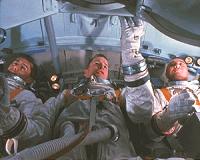 |
Concord MA (SPX) Aug 24, 2010 Though phenomenally fit, astronauts grow weak after prolonged missions in zero gravity. To help combat muscle atrophy, a Spanish company using SolidWorks software has developed a sophisticated system to test their strength in space. Called MARES, the Muscle Atrophy Research and Exercise System was developed by NTE-SENER for the European Space Agency (ESA). MARES consists of an adjustable chair with a system of pads, levers, electronics, software, and a motor that tests a dozen muscle groups for weakness and exercise benefits. It was launched last April aboard the NASA Discovery Space Shuttle and will soon be installed in the European Columbus Module of the International Space Station. "SolidWorks has been a great change from our previous CAD software," said NTE-SENER Mechanical Engineer Albert Catalan. "It helped us quickly create concepts, review them in vivid 3D detail with NASA, and develop a very sophisticated design, simulating real-world forces on the MARES system along the way." The design requirements were rigorous. MARES needed to restrain the astronaut, limit motion to the tested muscles, ensure user safety, deliver power-assisted resistance, and handle any astronaut between the fifth and 95th height percentiles. The system also needed to be modular so astronauts could assemble, disassemble, stow, and operate it. NTE-SENER used SolidWorks to achieve several design goals: + Ensuring proper fit in the space shuttle by seamlessly exchanging data with SolidWorks users at NASA. + Packing myriad components into the shuttle's restricted space. + Detecting any interference among parts. + Reducing risk of failure and injury by analyzing the effect of real-world physical forces on the MARES system (using SolidWorks Simulation software). + Easily accommodating several parts designed by another engineering firm. Sharing data with manufacturing partners in their preferred form, whether SolidWorks model, STEP file, or drawing. "SolidWorks has helped us quickly and cost-effectively develop an important system that could dramatically improve the quality of space exploration and the health of our astronauts," said Manuel Canchado Morales, head of NTE-SENER's mechanical engineering department. "And the things we learn in space could be useful on the ground, both for astronauts and the rehabilitation community. The research could ultimately refine care for victims of paralysis, trauma, or prolonged immobilization."
Share This Article With Planet Earth
Related Links Dassault Systemes SolidWorks Space Tourism, Space Transport and Space Exploration News
 Researchers Explore Physiological Effects Of Space Travel
Researchers Explore Physiological Effects Of Space TravelManhattan KS (SPX) Aug 24, 2010 The final frontier may be no further than Manhattan, Kan., as a team of Kansas State University researchers launches a project funded by a $1.2 million grant from the National Aeronautics and Space Administration. The team - composed of Thomas Barstow, professor of kinesiology; Steven Warren, associate professor of electrical and computer engineering; Russell Taylor, an engineer in the Ele ... read more |
|
| The content herein, unless otherwise known to be public domain, are Copyright 1995-2010 - SpaceDaily. AFP and UPI Wire Stories are copyright Agence France-Presse and United Press International. ESA Portal Reports are copyright European Space Agency. All NASA sourced material is public domain. Additional copyrights may apply in whole or part to other bona fide parties. Advertising does not imply endorsement,agreement or approval of any opinions, statements or information provided by SpaceDaily on any Web page published or hosted by SpaceDaily. Privacy Statement |